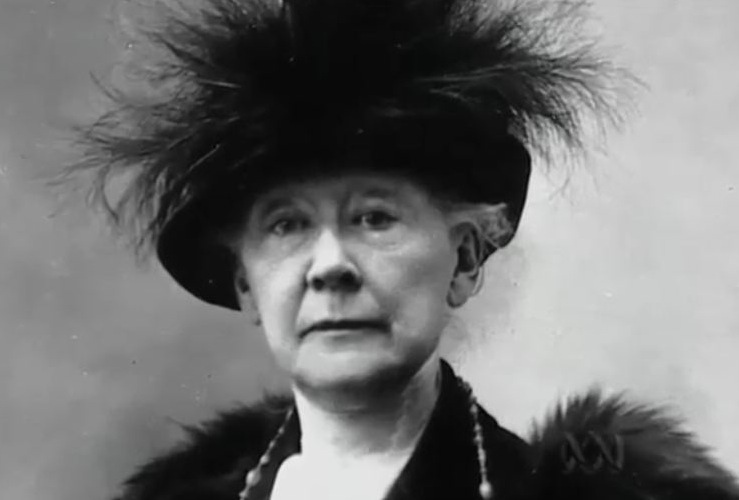
by Irvin Goldman | Aug 23, 2015
Mary Stevenson Cassatt, born in 1844, was an American painter and printmaker. She was born in Pennsylvania, but spent most of her life in France, where she befriended many Impressionist painters, and where she subsequently exhibited works with the Impressionists. Mary first exhibited her work alongside the Impressionists in 1877 — the only American artist to exhibit her work with them.
Cassatt often created images of the social and private lives of her subjects, with a particular emphasis on the human form and the intimate bonds between mothers and children. In 1893, Mary Cassatt created the oil painting with mother figure and a young child. The scene captured the ritual of a parent bathing a child.
The painting, entitled The Child’s Bath, with its then unorthodox composition, is considered one of Cassatt’s masterworks. Cassatt utilized new techniques like cropped figures, bold outlines, and 2-D perspective, most likely derived from her passion for Japanese woodblock prints that was sparked after she saw Japanese woodcuts at the Beaux-Arts Academy in Paris during an exhibition.
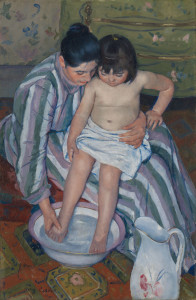
The Child’s Bath
Cassatt was greatly influenced by Impressionist like Claude Monet, Berthe Morisot, and especially Edgar Degas. Though her painting genre innately put her in the company of mostly men, Cassatt was a feminist from a young age and attempted to avoid the stereotype of being just a female artist.
As well as being an accomplished painter, Mary Cassatt was an activist as well as feminist and supported women’s suffrage. In 1915, she showed eighteen works in an exhibition supporting the movement organised by Louisine Havemeyer, a stalwart, active feminist.
Though many unfamiliar with her history would deem her as just the female Impressionist artist, Mary Cassatt was an intrepid and open-minded artist with the true spirit of the Impressionist movement within her. Her intimate portrayals of the human figures and their interactions were markedly different from her male counterparts, and her contribution cannot be dismissed.
Mary Stevenson Cassatt died on June 14, 1926 at Château de Beaufresne, near Paris, and was buried in the family vault at Le Mesnil-Théribus, France.
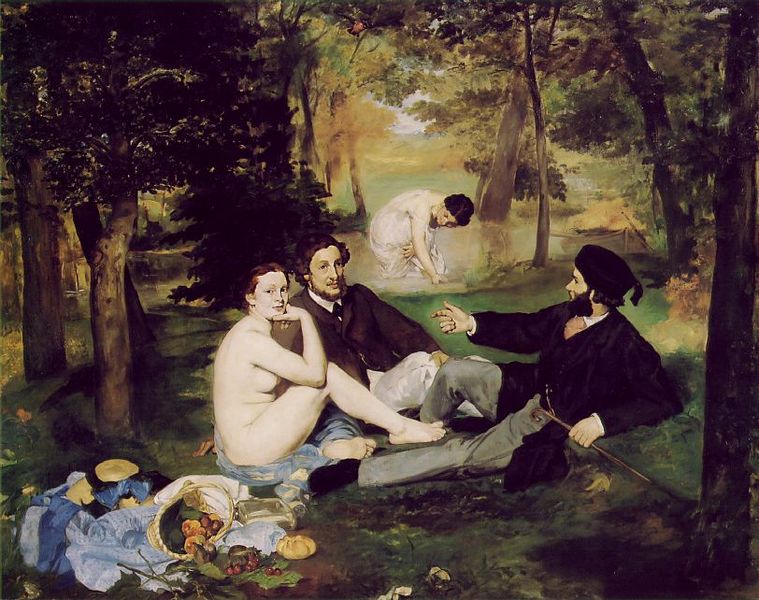
by Irvin Goldman | Aug 10, 2015
Edouard Manet’s masterpiece Dejeuner sur l’herbe contains within it a recipe for modern painting. The piece was one of a number of impressionist works that broke away from classical conventions and paved the road to a daring new era. Dejeuner was denied entry to the 1863 Salon Exhibit in Paris, instead shown under the title Le Bain at the Salon des Refusés (an alternative salon established by those who had been refused entry to the official salon). Le Bain became the principal attraction, generating both laughter and scandal.
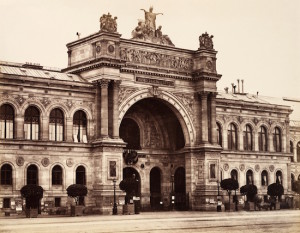
Palais de l’industrie – Location of Salon des Refusés
This subsequent scandal was occasioned by several reasons. One was that there appeared to be something unfamiliar or puzzling about the female nudes. Nude women in art were nothing new, however, their presence in Dejeuner’s modern setting, accompanied by clothed, bourgeois men, created an incongruity that suggested that these women were possibly prostitutes. The gaze had been shifted from a suggestive nude to a mere naked lady.
Manet also caused a stir with break from the rules of three-dimensional perspective established in Renaissance painting. Manet painted figures with a flatness, perhaps a nod to Japanese art, allowing for the paleness of the woman in the foreground to have a commanding presence against the subdued surroundings. He collapsed the relationship between background and foreground and provided no comfortable gradation between dark and light areas. Though some would disregard him as a ruiner of classical methods, there was an exacting method to the odd composition of Dejeuner sur l’herbe. Manet was purposeful, so his brazen brush marks in his works was a challenge viewers to interact with a frenetic space, instead of the smooth comfortable style per the standard of Salon painting of the time. He was asking the audience to come play with light, let down their preconceived notions about art, and breakthrough to modernity.
The modern pictorial space was taking form, and Manet was at the forefront.
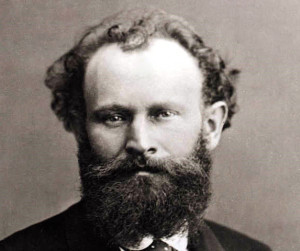
Portrait of artist Edouard Manet
Manet was paying tribute to Europe’s artistic heritage, borrowing his subject from Titian’s Concert Champêtre, and taking his composition of the central group of figures from the Marcantonio Raimondi engraving which in turn drew upon Raphael’s Judgement of Paris.
But the beauty of Dejeuner sur l’herbe is his treatment of the paint and his placement of classical elements in a contemporary scene. Many rendered the painting strange, provocative and obscene in the eyes of the public. But with the passage of time, what critics considered Manet’s obscenities, became the mark of his genius.
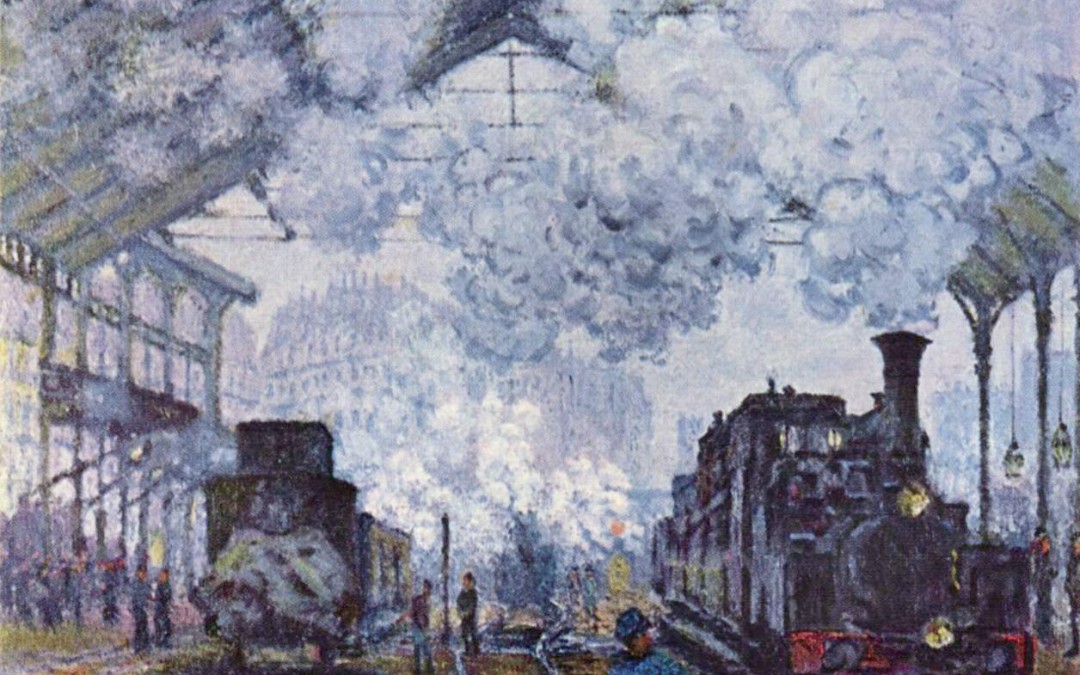
by Irvin Goldman | Jul 3, 2015
The industrial revolution was possible because of increased trade, which in turn created increased revenue, thus accelerated the industrial revolution. The focus of many studies of the industrial revolution focused on factories, mechanized textiles, steam power, and the use of steel, and how they transformed the urban landscapes of the United States and much of Europe. The industrial revolution contributed significantly to the urbanization and growth of cities — and the rise of financiers and industrialists.

Present day Gare St-Lazare
The industrial revolution changed the way artists worked, and how they worked. Paints and tools were now mass produced and cheaper, which led way for “starving artists” to become more prolific than they could before. Artists being geniuses for capturing their environments, often used the backdrop of the revolution into their work. Claude Monet’s Gare St-Lazare was a perfect example of his depiction of the changing landscape of the world.
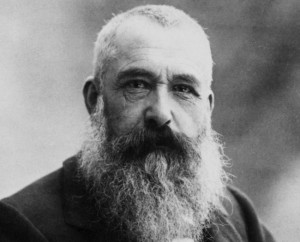
Claude Monet
Oscar-Claude Monet was an artist known as being the founder of French Impressionism. In fact, the word “impressionism” comes from his painting Impression, soleil levant (Impression, Sunrise). Though many of his paintings during this era usually represented landscape paintings of the French countryside, Monet adapted his studies of light and shadows of his country landscapes to the changing landscape of the country. Monet used his skill of observation to translate the light and dark of the coming of industrial technology.
In January 1877, Monet rented a small flat and a studio near the Gare St-Lazare, and in the third Impressionist exhibition which opened in April of that year, he exhibited seven canvases of the railway station. Gare is one of four surviving pieces of the interior of the station. Though many artists rendered the station, none were as compelling as this series by Monet.
Instead of showing industry as a grotesque, pollutant, in Monet’s canvas seemed to exist a beauty in its portrayal. Using swift brushstrokes, the artist was able to create an energy and excitement: smoke rising, engines churning, and people crowding on the platform against an industry-covered sky. The choppy, cropped subjects in the foreground to the quick strokes and combination of colors Monet used created a scene of frenetic energy. Being the master he was, there is no doubt that forcing the viewer to shift their eyes back and forth to capture the entire scene was intentional — to create a frenzied symphony of movement.
The iconic painting successfully depicted the smoke and fiery of the Industrial Revolution as it roared into the next era.


















